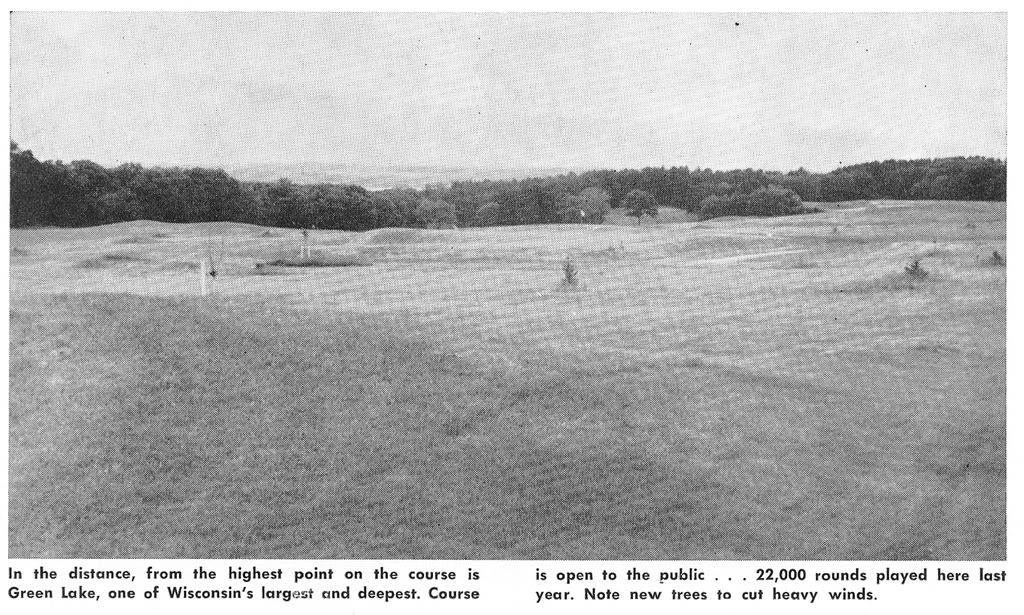Lawsonia’s back nine, which consists of an eclectic compilation of holes, is a fascinating example of Langford’s view that “the distribution of length much more than total length determines a course’s character.” Starting with the Herculean 10th which just may be the hardest "long" hole on the course, one confronts 3 par 3’s, 3 par 5’s, two of which are reachable in two, and 3 par 4’s arranged 3-5-3-5-3-4-4-4-5. When looked at from a distance point of view in terms of the final approach shot required, depending on the option taken from the tee or with the lay-up, the holes play like this 10 (long), 11 (long or short), 12 (medium), 13 (medium/short), 14 (short/medium) 15 (medium), 16 (long), 17 (medium/short), 18 (long or short).
10th Hole 239/217 (240)
Ron Forse calls the 10th at Lawsonia one of the three best long par 3’s in the world. This hole tests the strength and accuracy one’s long game as much as any of the long holes on the course. An imposing cross bunker aligned with the surface of the largest green on the course hides abundant fairway between it and the green creating problems with the perception of the length of the hole. The cross bunker hides the wide open and welcoming to a run up to the huge green which contains some very significant internal undulations and imposing pin locations as my recent 3 and 4 putts can attest. A 3 can be viewed as a half birdie and a 4 a half par.
10th From the Bridge behind the 10th Tee
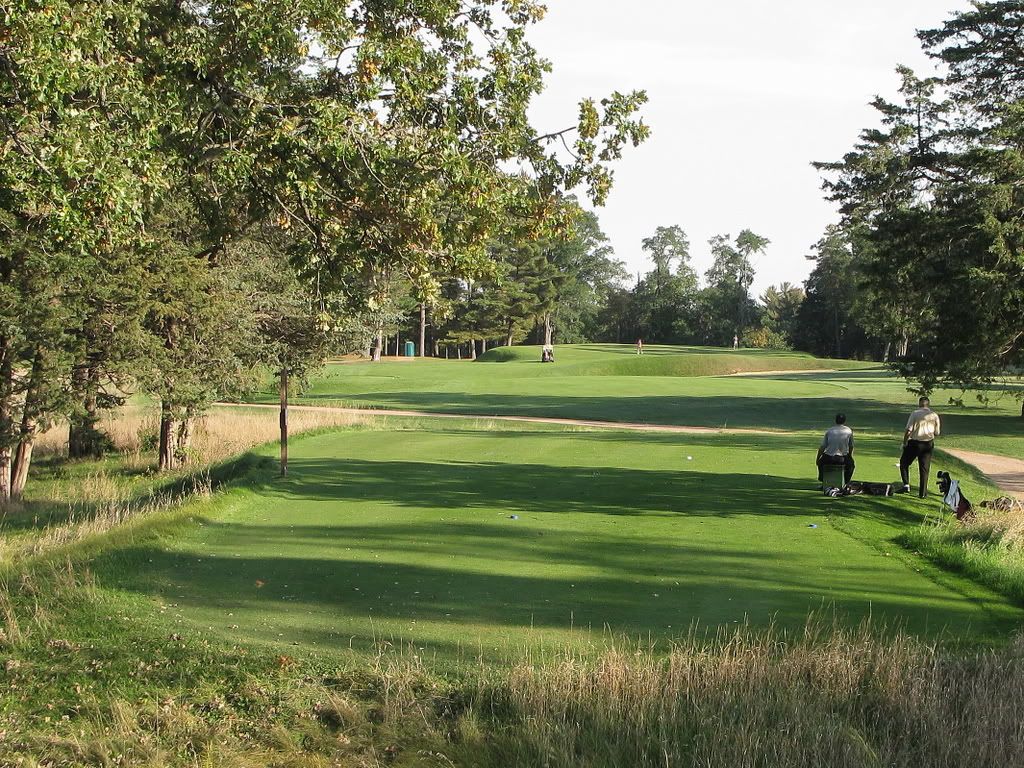
10th From Green
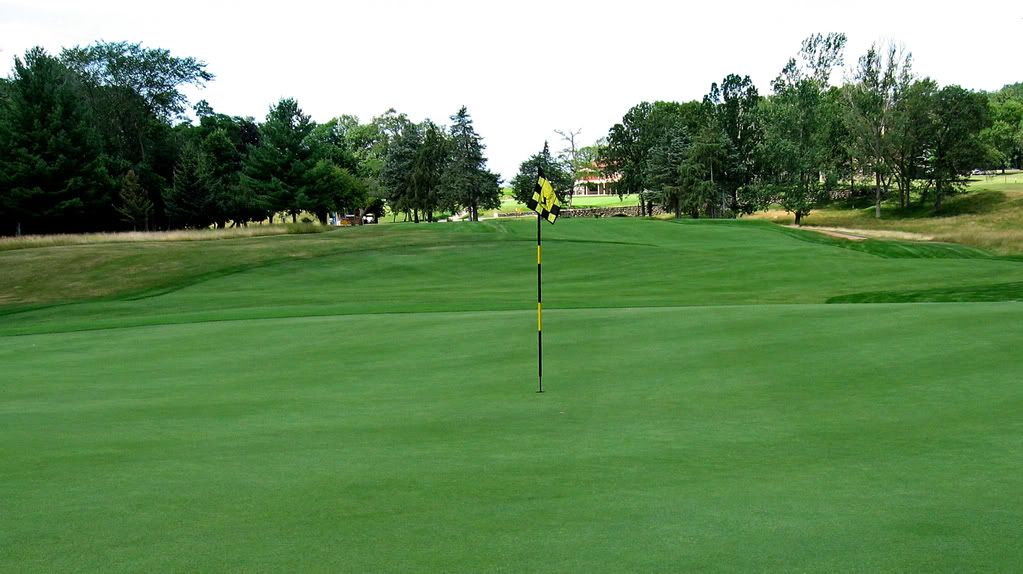
10th at dawn showing open approach to green beyond the cross bunker, tee is out of frame to the far right

10th Green Undulation and Recapture

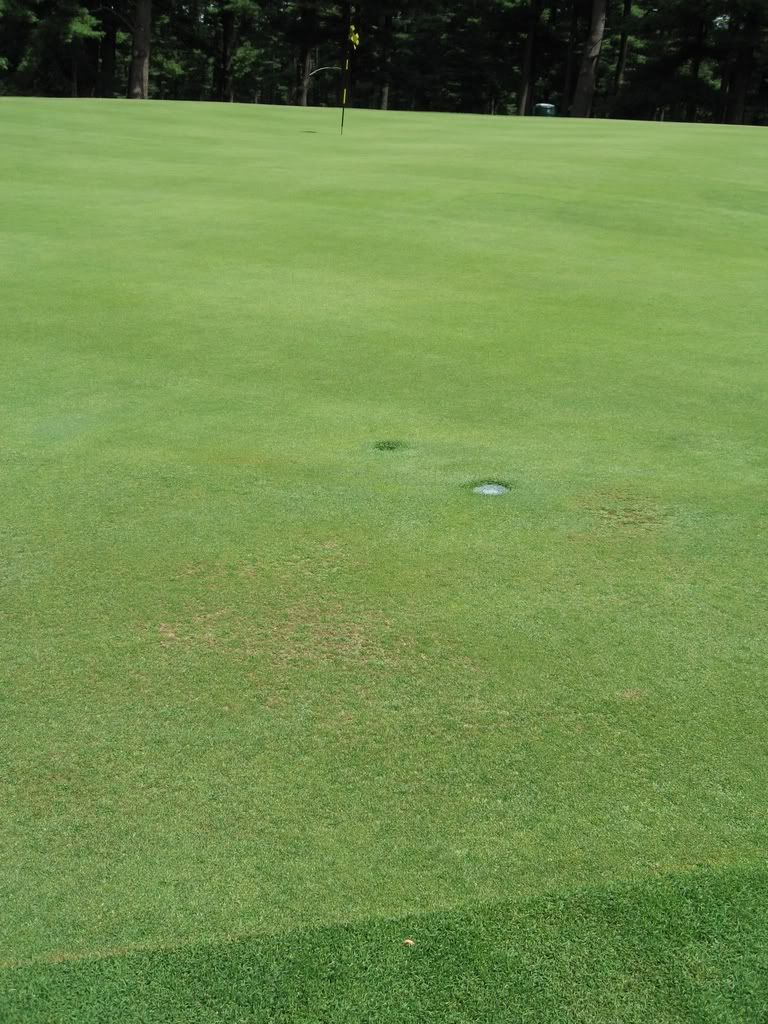
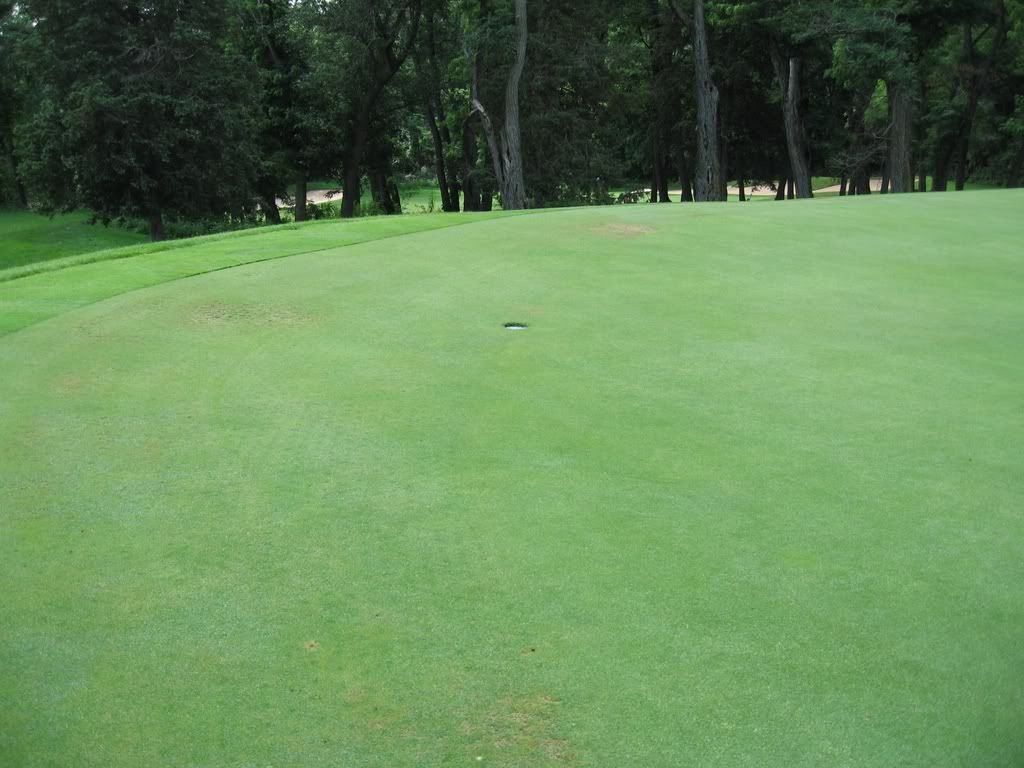
11th Hole 510/482 (455)
One of my favorite holes on the course, the 11th is an ingeniously strategic hole combining penal bunkering with a variety of ways to attack the short par 5. An opportunity to regain ground lost on 10, one will be reasonably happy to complete 10 and 11 in 8 shots regardless of where they are taken.
The 11th is an outstanding example of Langford’s view that “Hazard’s should be placed so that any player can avoid them if he gauges his ability correctly, so that they will make every man’s game more interesting no matter what class player he is, and offer an award commensurate with the player’s ability.” (1914)
11th From the tee the safe play is to the left, the risk reward line over the bunker on the right

11th The Penal Fairway Bunkers must be avoided
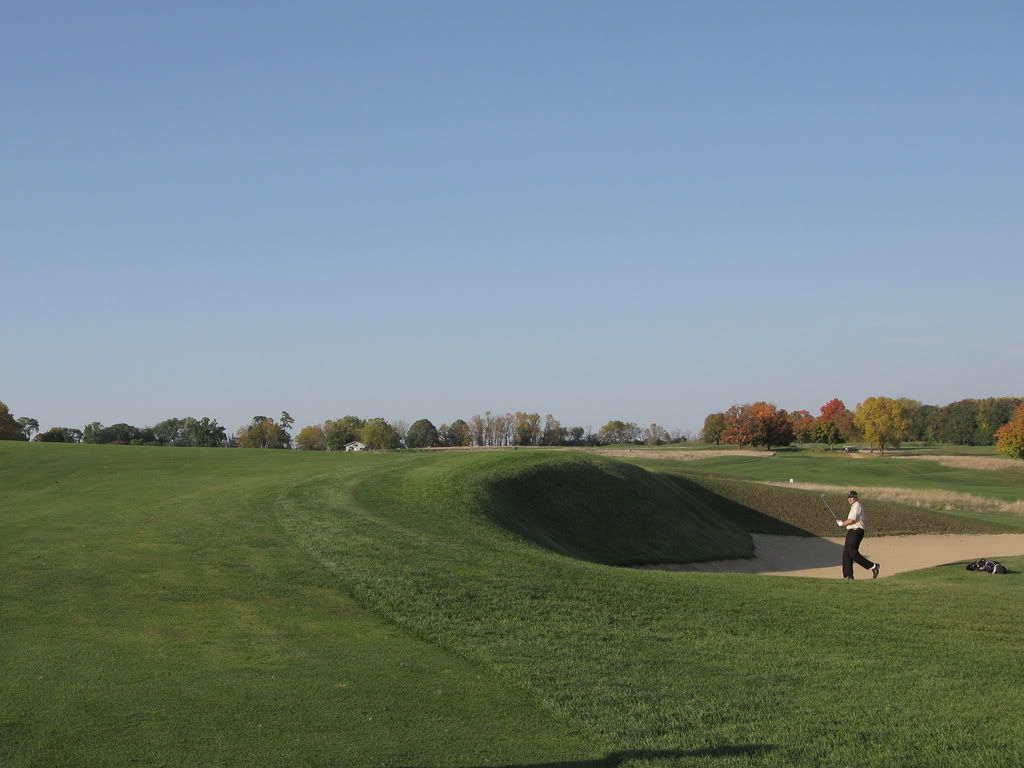
11th From Landing Zone. The staggered bunkering presents a variety of options with serious penalties imposed on those who fail to execute their chosen approach.
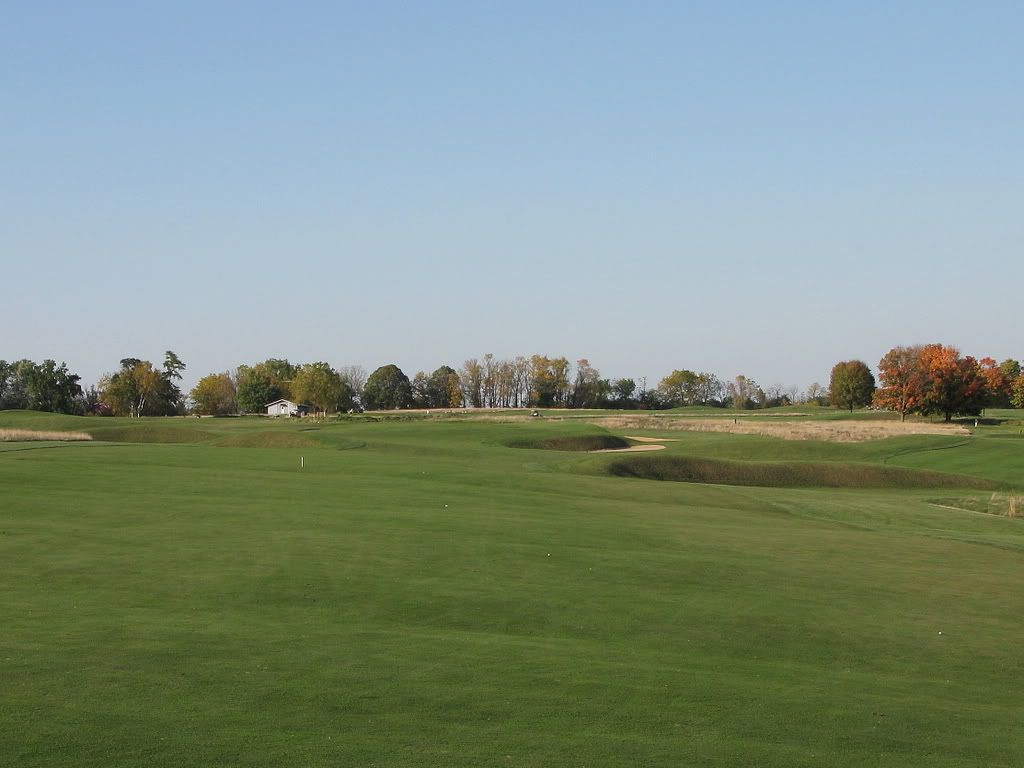
11th Green from short of the green showing a subtle raised green edge that hides the green surface on approaches from inside 100 yards making the short approaches much more difficult to judge. Laying up well short of the green provides a better view of the green surface.
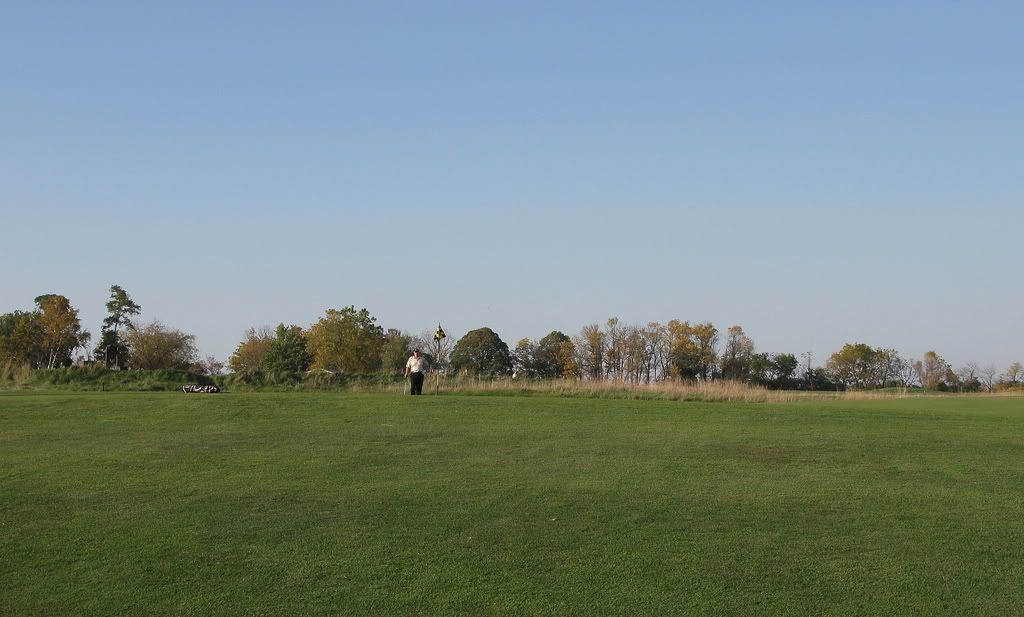
11th Look Back. Just a simple straight hole right!
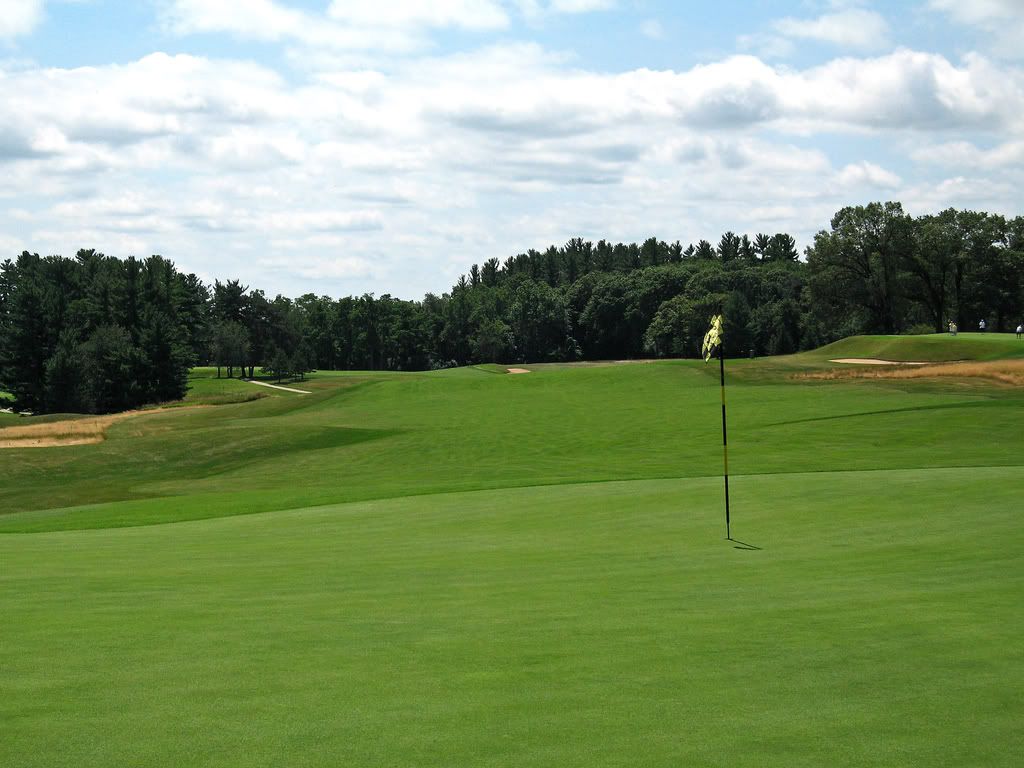
12th Hole 183/171 (175)
Located in the middle of an open field without any natural advantages, nevertheless Langford created a hole of merit. Fronting bunkers repeat the bottleneck theme seen on several holes and significant interest is gained from a large San Andreas faultline running through the rear of the green.
12th From Tee Playing slightly uphill with the prevailing wind front hole locations can be very tricky.

12th Green The San Andreas Fault segments the green.

12th Confronting the Faultline
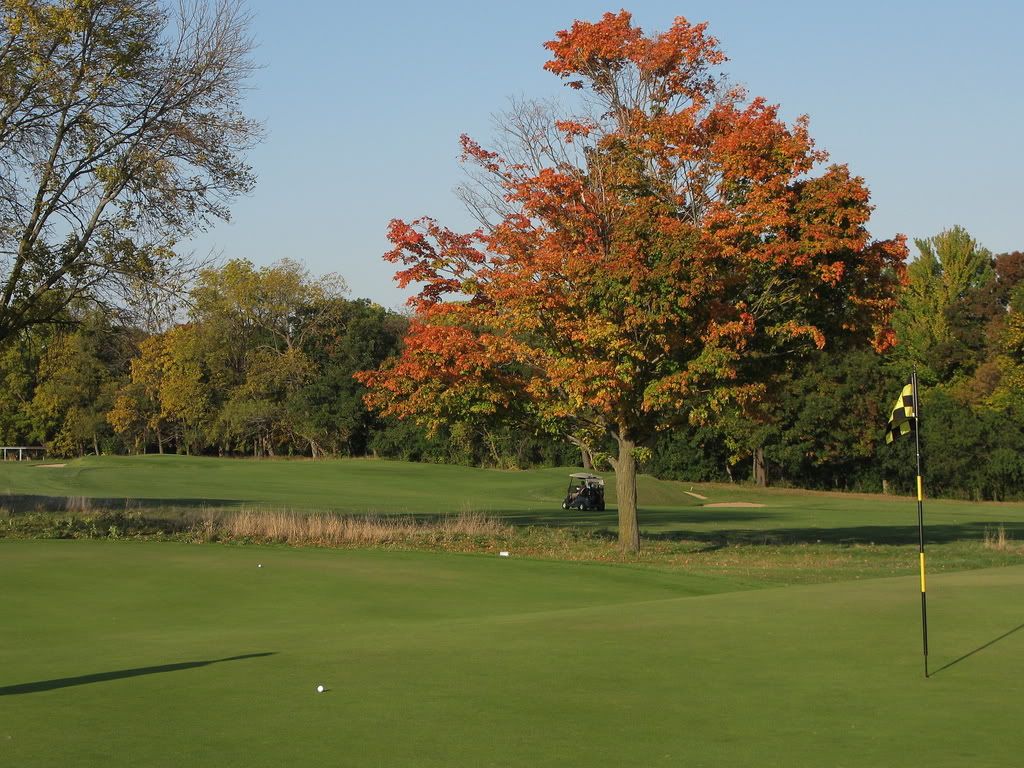
12th Looking Back
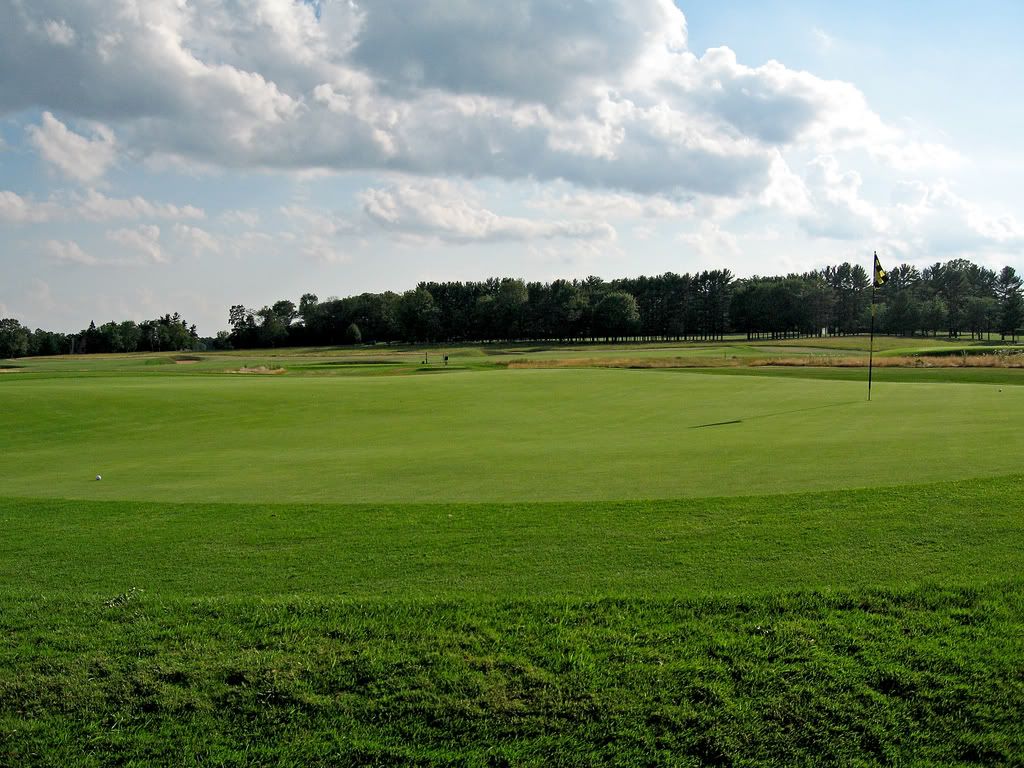
13th Hole 568/556 (560)
The 13th, the longest hole on the course, calls for well considered tactics combined with bold, accurate shotmaking. The need for a strong drive is tested by a series of bunkers aligned en echelon along the left edge of the fairway creating a slight cape effect for those who challenge the bunkers in an effort to gain distance. The second shot requires a well played well placed shot past the tree located 180 yards from the green. The fairway drops off significantly inside 120 yards and one needs to be careful to avoid a down hill lie for the third to the green located high on a bluff surrounded by pines.
13th From Tee
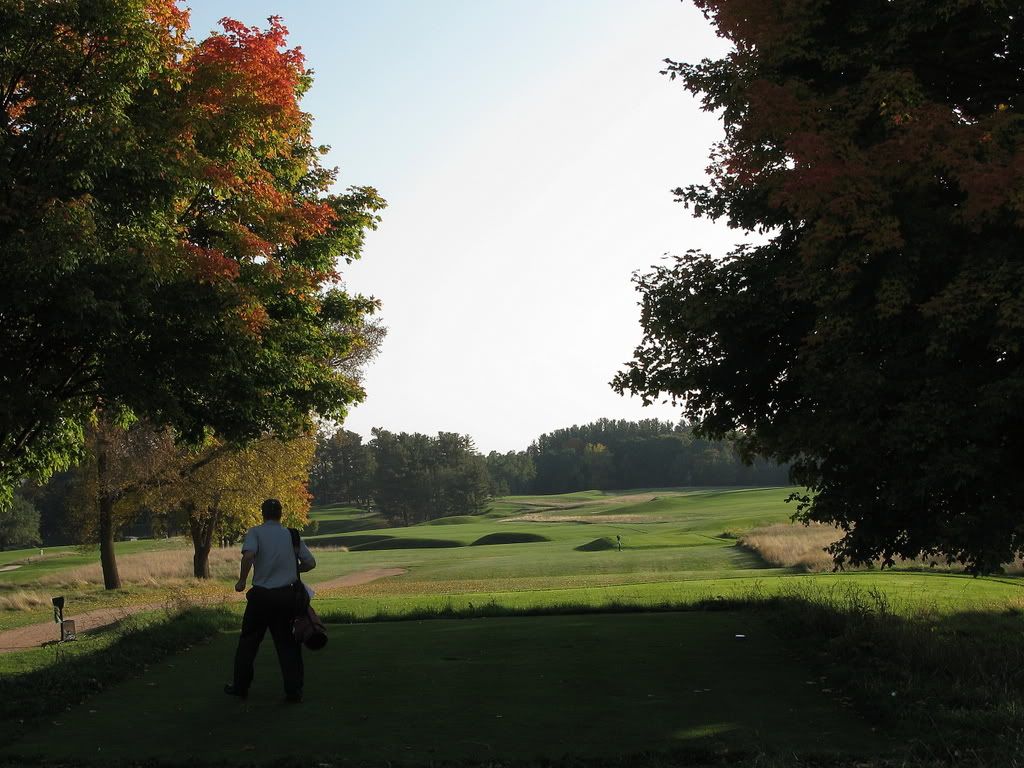
13th Bunkers en echelon “ Thus to open up two or more avenues of play on a hole we must build our cross bunkers en echelon (step formation or diagonally across the course, and must allow bunkers built at right angles to the line of play to extend only partially across the course, leaving room to play around them at one or both ends.” Langford 1914

Langford’s 1914 drawing showing en echelon bunker arrangement
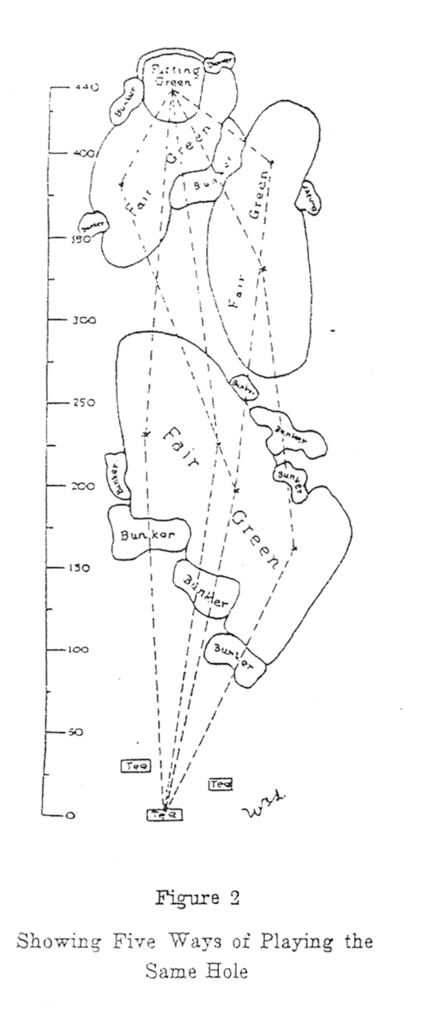
13th From the landing zone showing the original tree 185 yards from Green

13th From the landing zone right
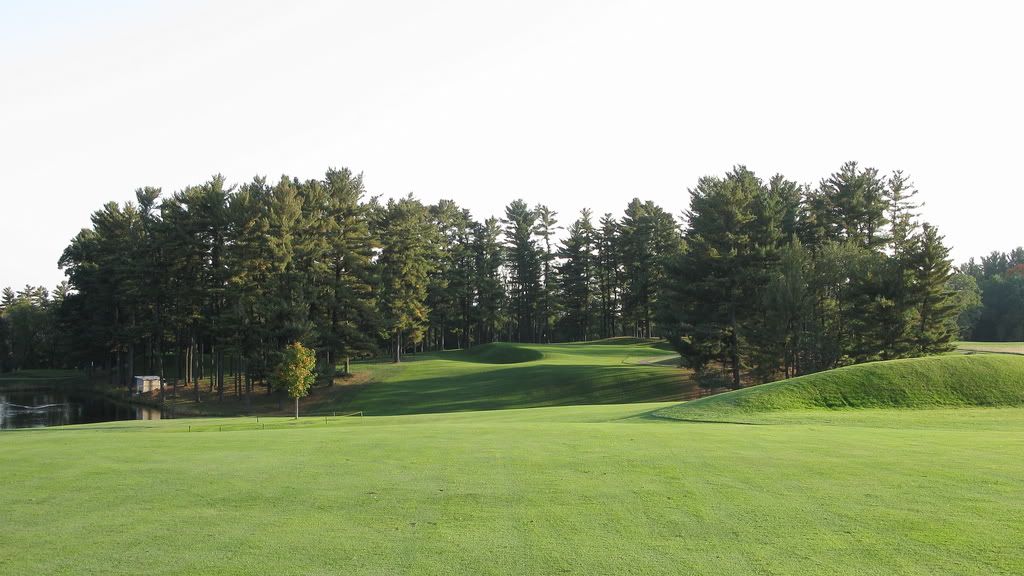
13th A Look Back. Note the ideal lay-up location on a plateau between 150 marker and about 120 yards. Unless you can get all the way to the bottom of the gully anything farther risks a downhill lie to the uphill green location.
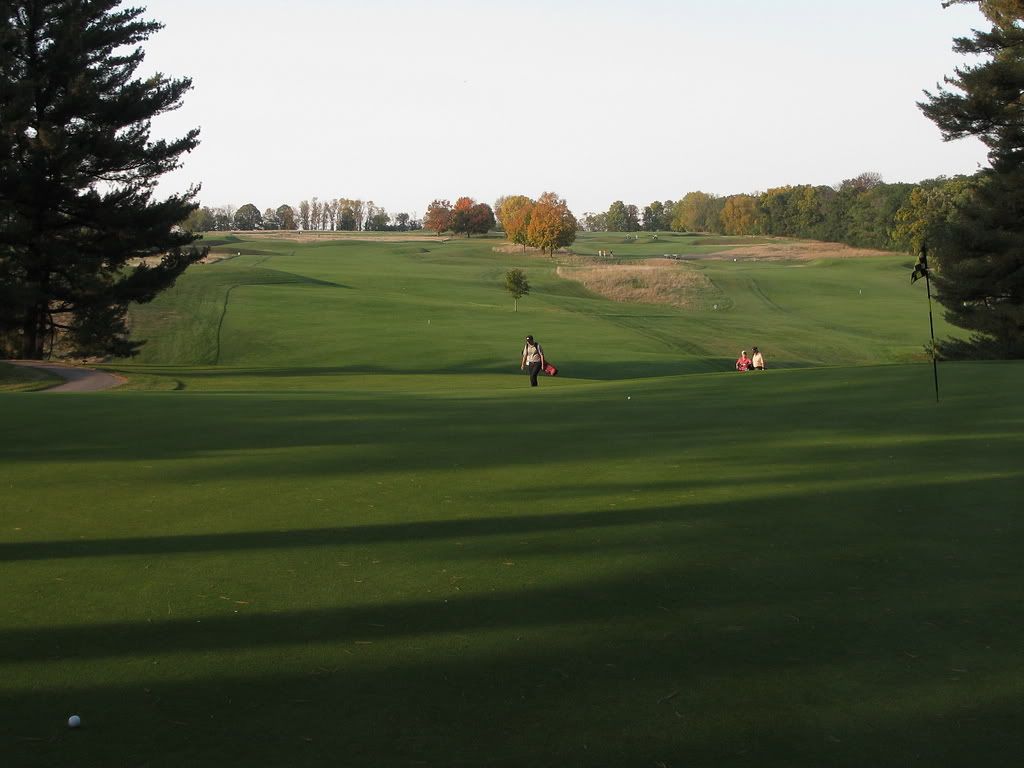
14th Hole 154/139 (130)
Another fine short hole with a tilted and tiered green that runs hard from back to front. Hole would benefit significantly from some tree trimming and removal
14 in the 1930’s with no pine trees around the green
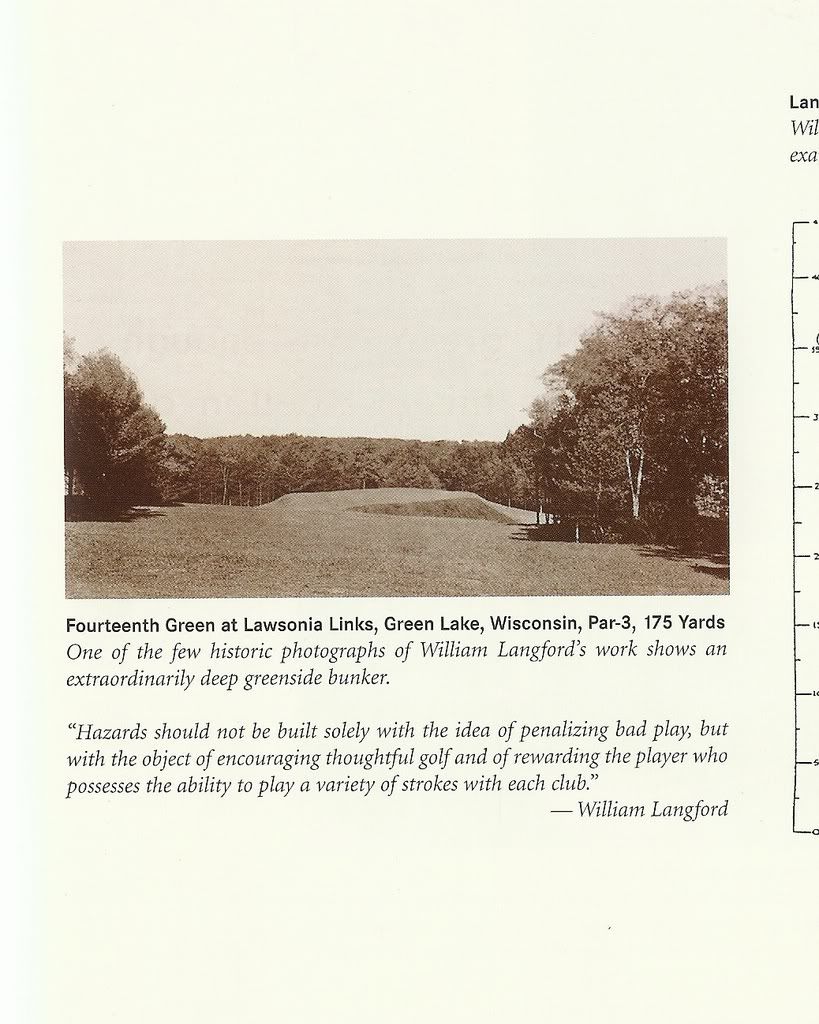
14th Green in 1968 surrounded by pines
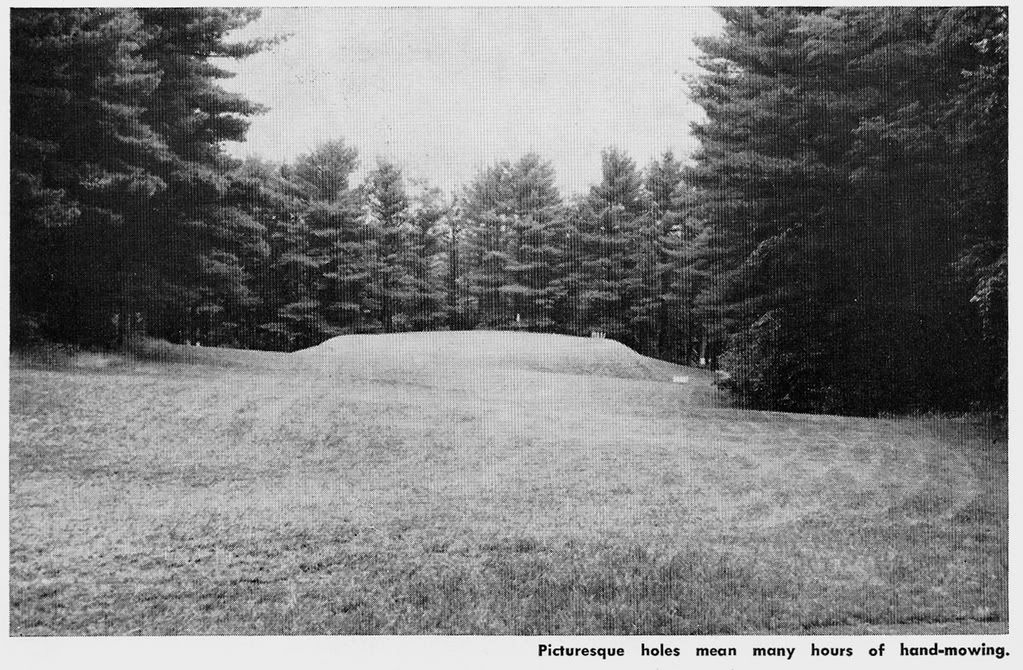
14th Green Today

14th From Green
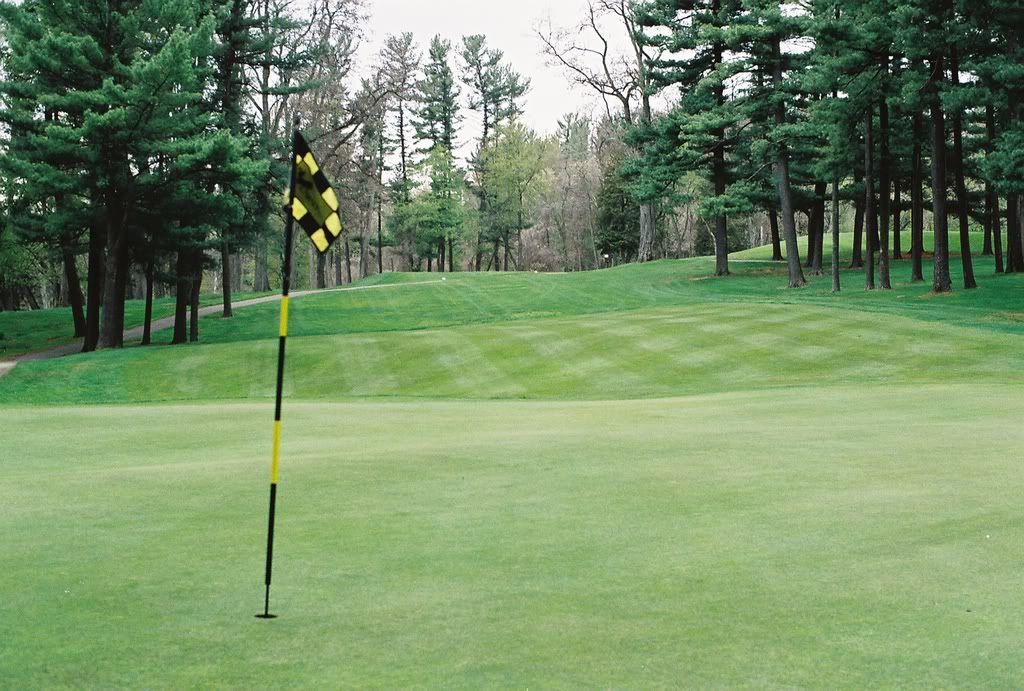
15th Hole 394/379 (395)
The 13th is an extremely fine hole. From the elevated tee the bold line is over the tree on the right, but not too far right as the green is tucked just around the corner of the trees on the far right. Dense forest right and a bunker just beyond the tree punish those on the bold line who fail to execute. The bunker is not a double hazard in the sense that once in the bunker the tree is behind you. While the bold line over the tree may cut off distance and place you atop the hill, the better angle to the green is to the left hand side of the fairway. Those playing left for the better angle who fail to carry the crest of the hill (260 yard carry) are left with a tricky sidehill, uphill lie to the raised green. Again multiple options from the tee with a variety of outcomes dependent on the quality of play.
15th From Tee this shot was taken below the elevated tee
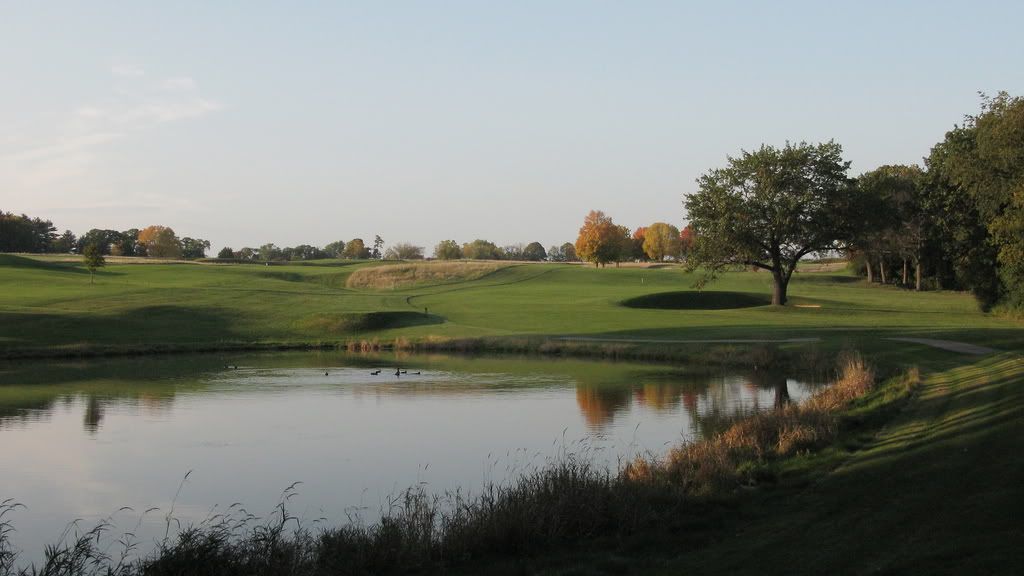
15th 2nd Shot from left showing the open angle from the left
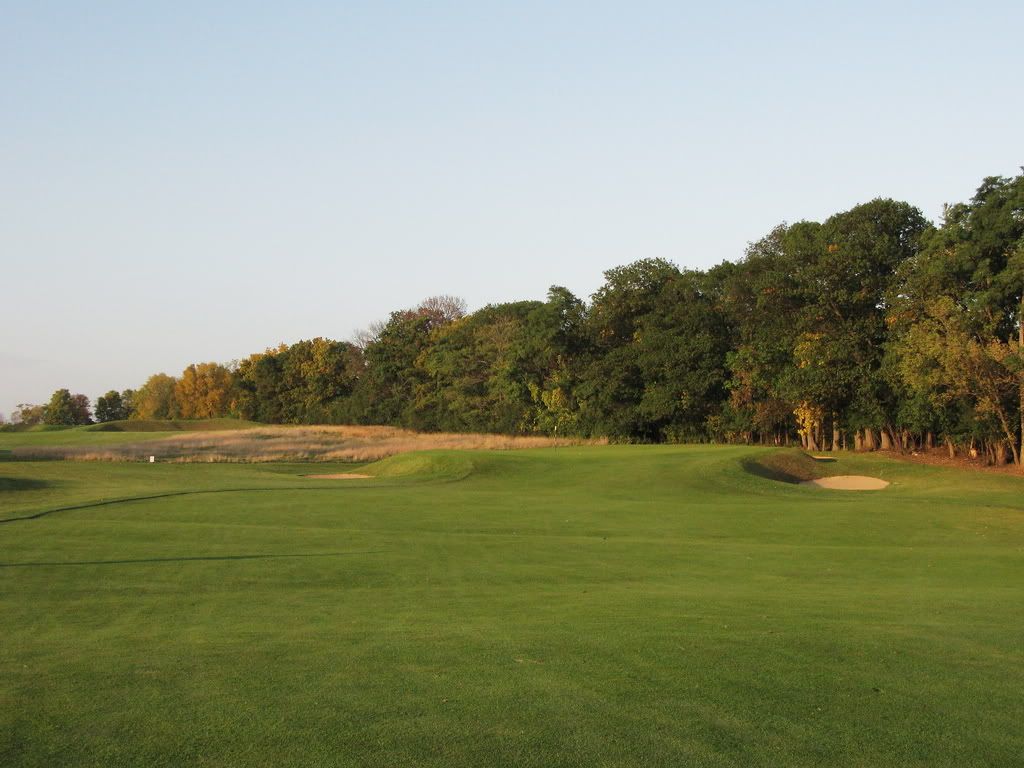
16th Hole 443/436 (435)
The four finishing holes, and the 16th in particular, provide an example of Langford’s preference for a difficult group of finishing holes “especially the 16th” to provide “good fighting ground for the finish of a hotly contested match.” Playing uphill the entire way, 16 simply requires two very solid, long strokes to get home in two; as it should be on the most difficult par 4 on the course.
16th From Tee. Best line is over the left bunker which greatly opens up the approach to the green.

16th Approach to Green Tucked to the Right
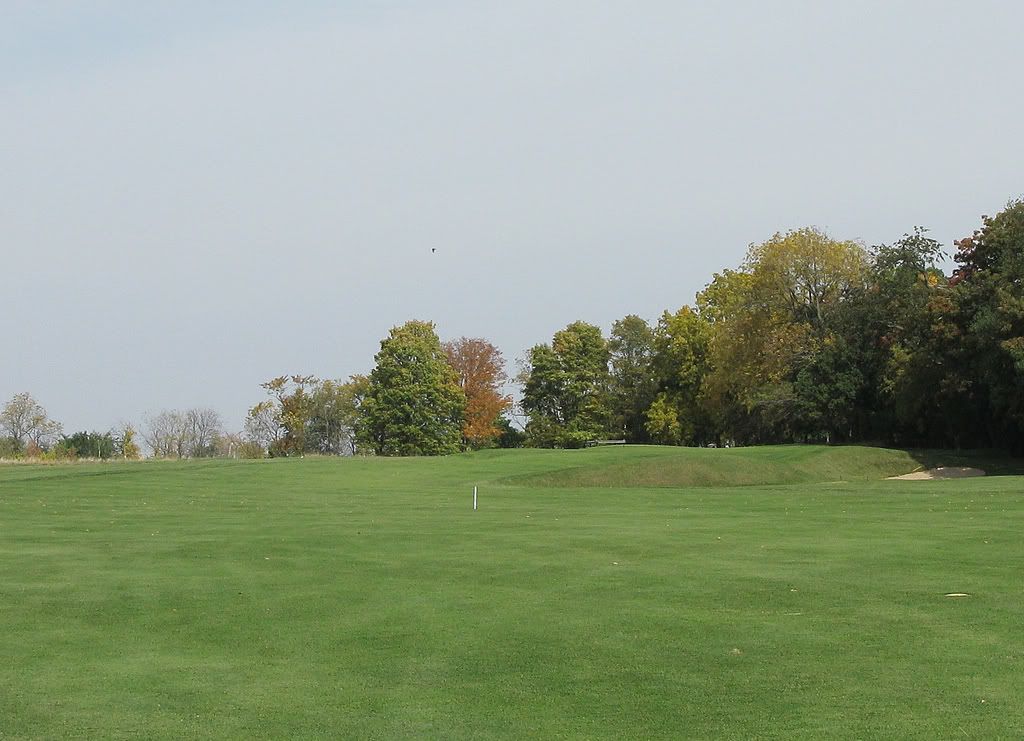
16th from the 13th Fairway

16th Looking Back
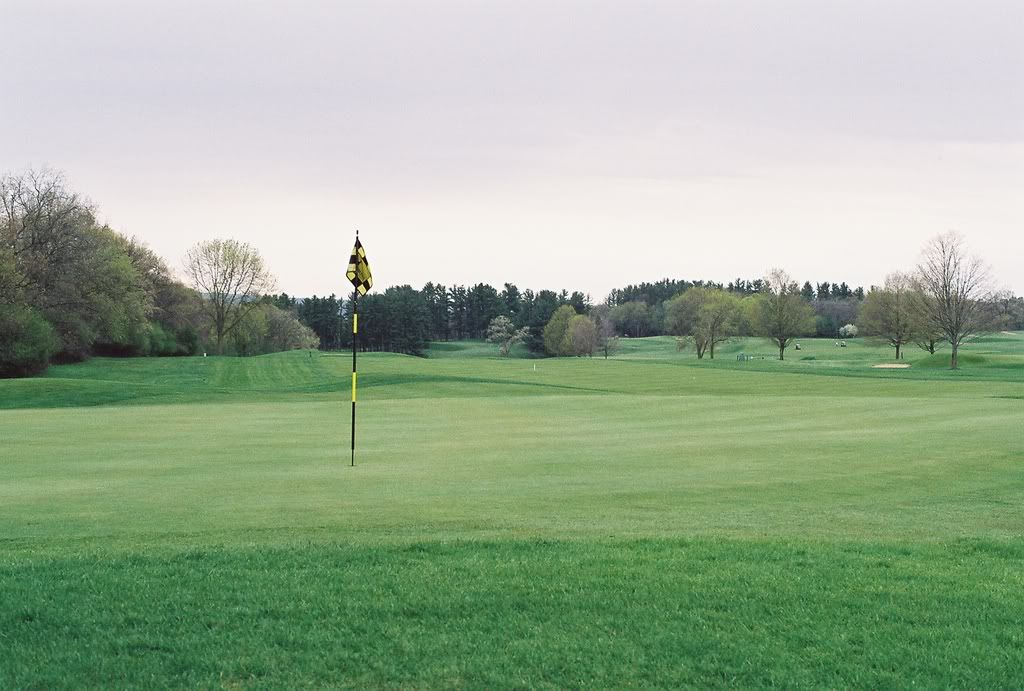
17th Hole 383/363 (365)
The 17th is a subtle hole on the same flat open area as the 12th where once again manufactured features provide an element of strategy that will reward thoughtful play. Playing slightly downhill two large flanking bunkers only 175 from the tee hide the green from view. As a result the key to this hole is to notice the pin position on 17 from the 12th tee as the pin location determines the proper line of play from the 17th tee.
17th From Tee with the green hidden from view by another example of bottlenecked bunkers pinching the fairway.
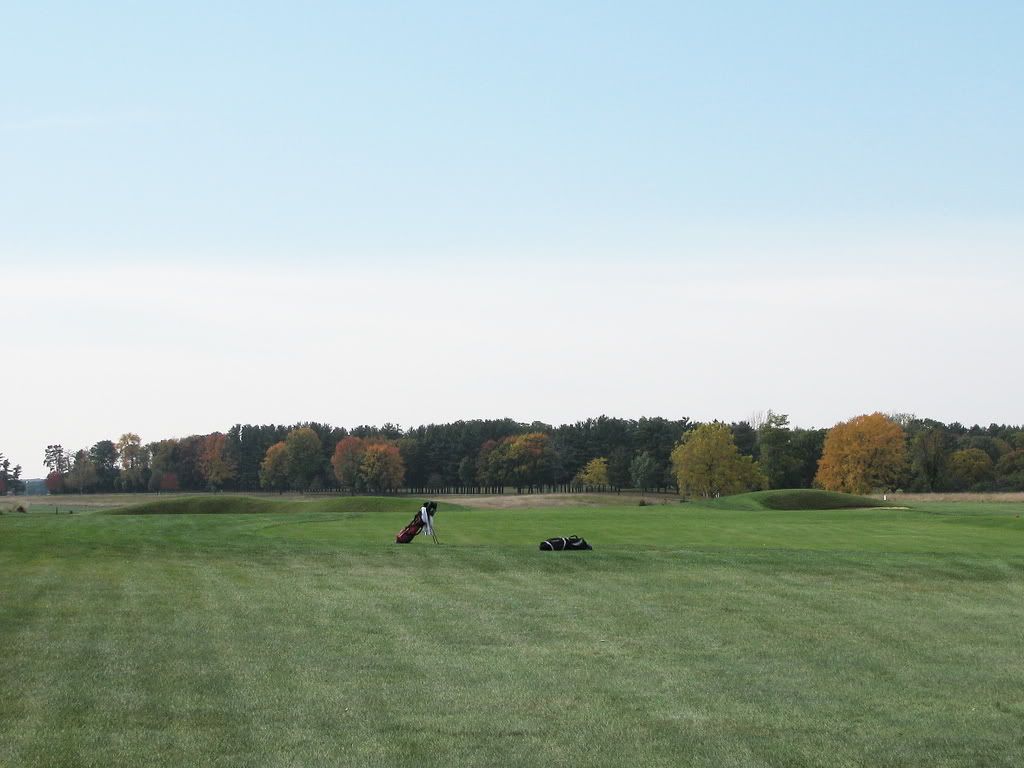
17th Green Another stellar green complex with bunkers that beautifully mirror the orientation and form of the fairway bottleneck bunkers.

17th Green viewed from far left showing advantage gained in attacking a pin from the proper side of the fairway as there is no way to get close to this flag from the right hand side of the fairway.

17th Looking Back From Green with pin in middle of green

18th Hole 580/490 (475)
Possibly an ode to the sailboats below on Green Lake, the 18th requires the tacking skills of a master sailor. A short strategic hole, the 18th is a match play dream hole.
18th From New Back Tee. Adding 90 yards completely changes the original character and intent of the hole for the average player, but may return that intent for the young guns.
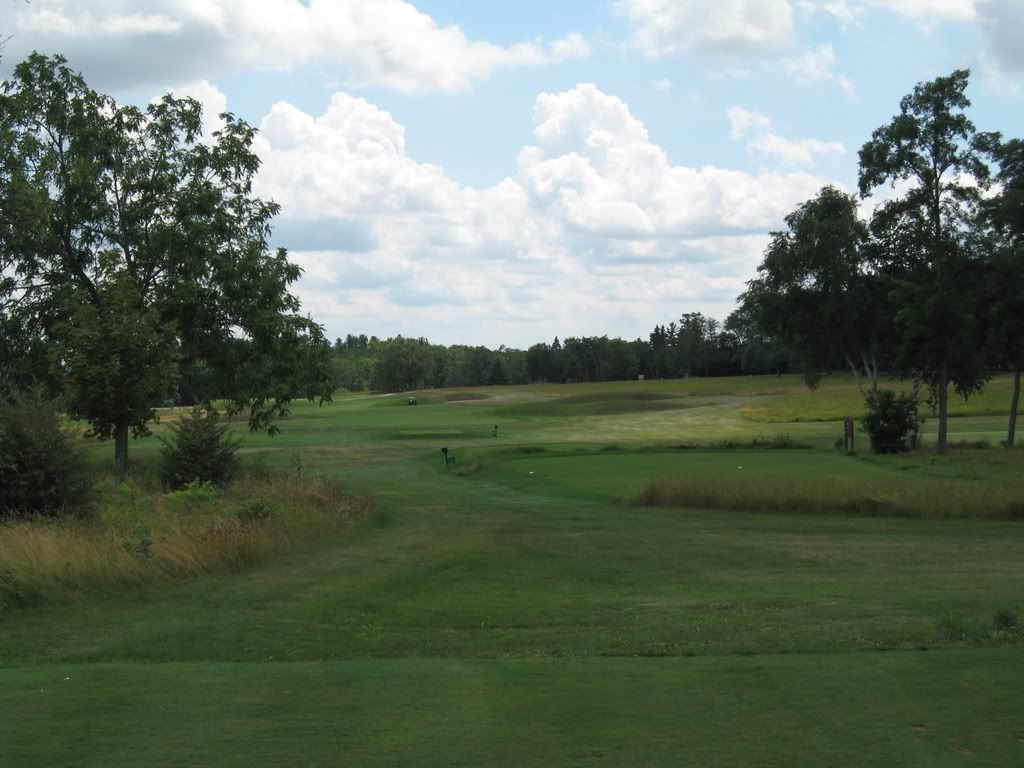
18th From Tee Shot Landing Zone showing the green of the this par 5 is very well protected and difficult to attack in two.
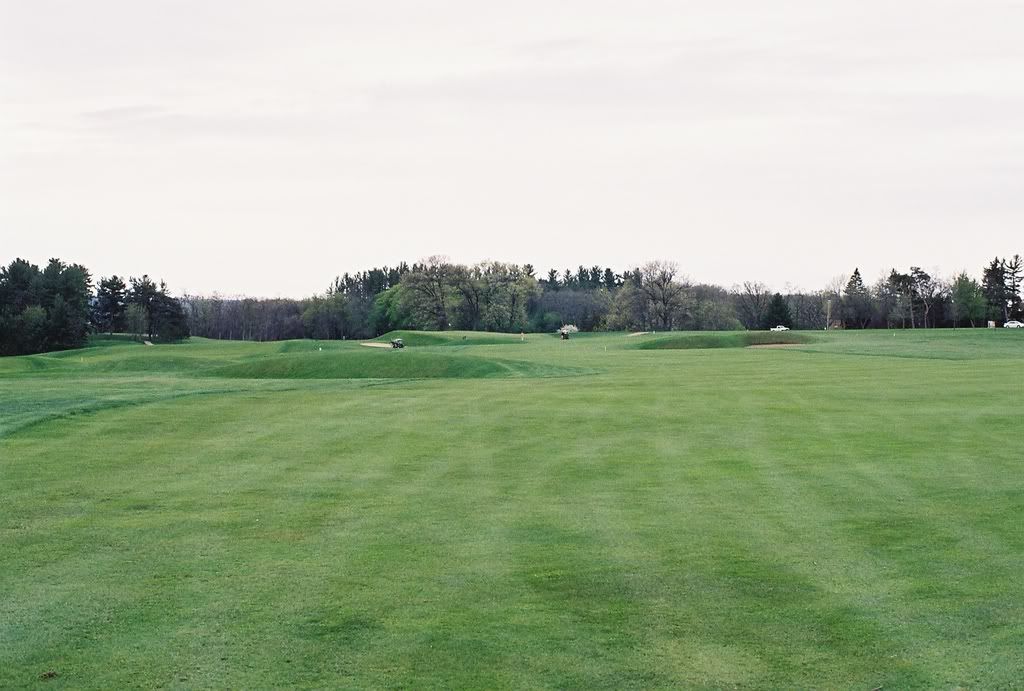
18th The view from 150 showing the advantage of carrying the right hand bunker and playing well to the right of the direct line with your second shot
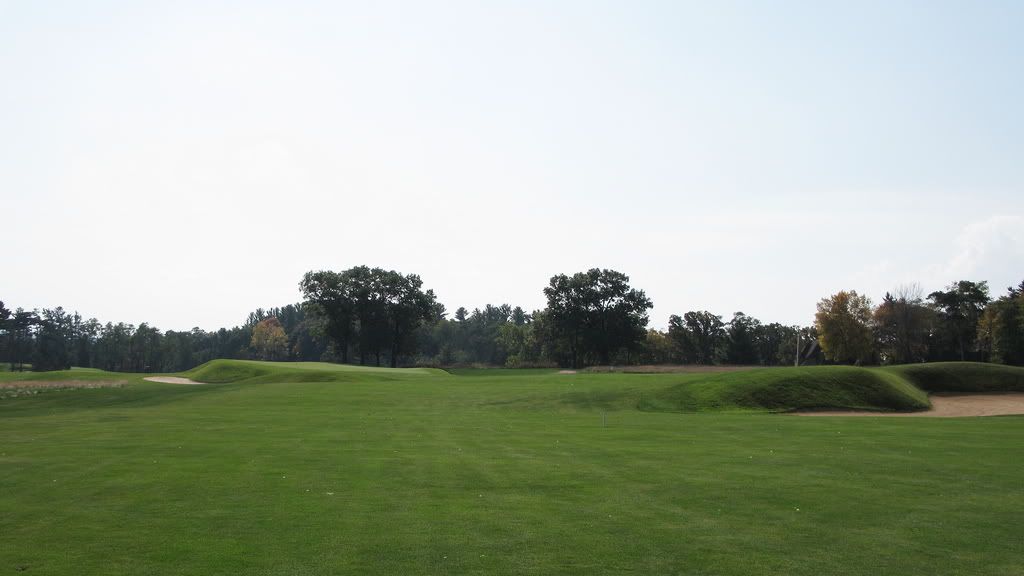
18th Green at Dawn
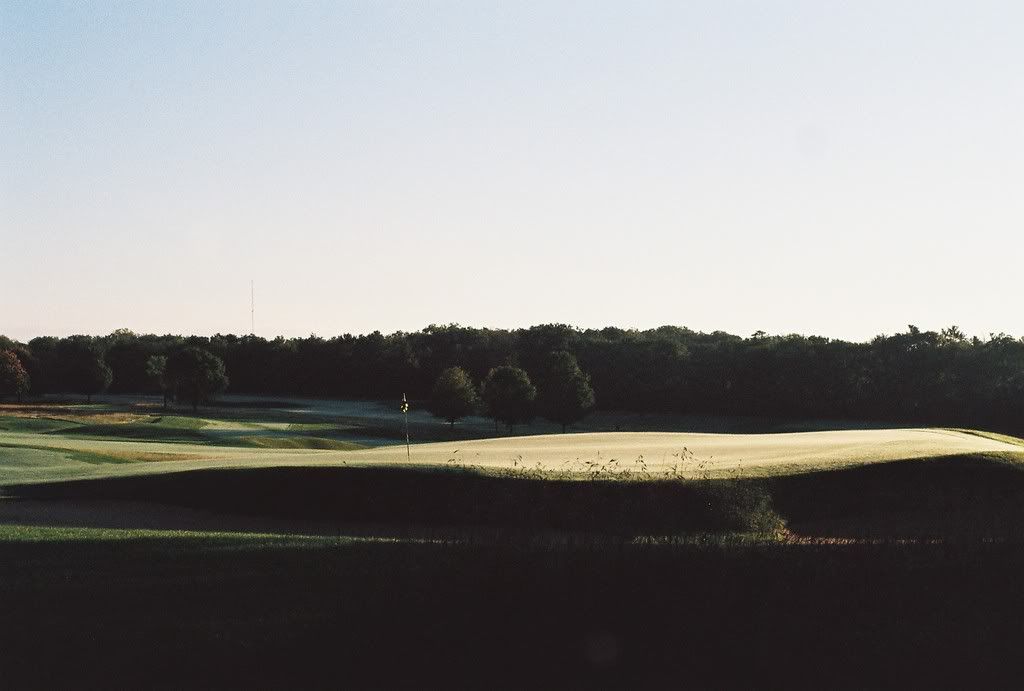
Late afternoon View of the Backnine From the 18th Green
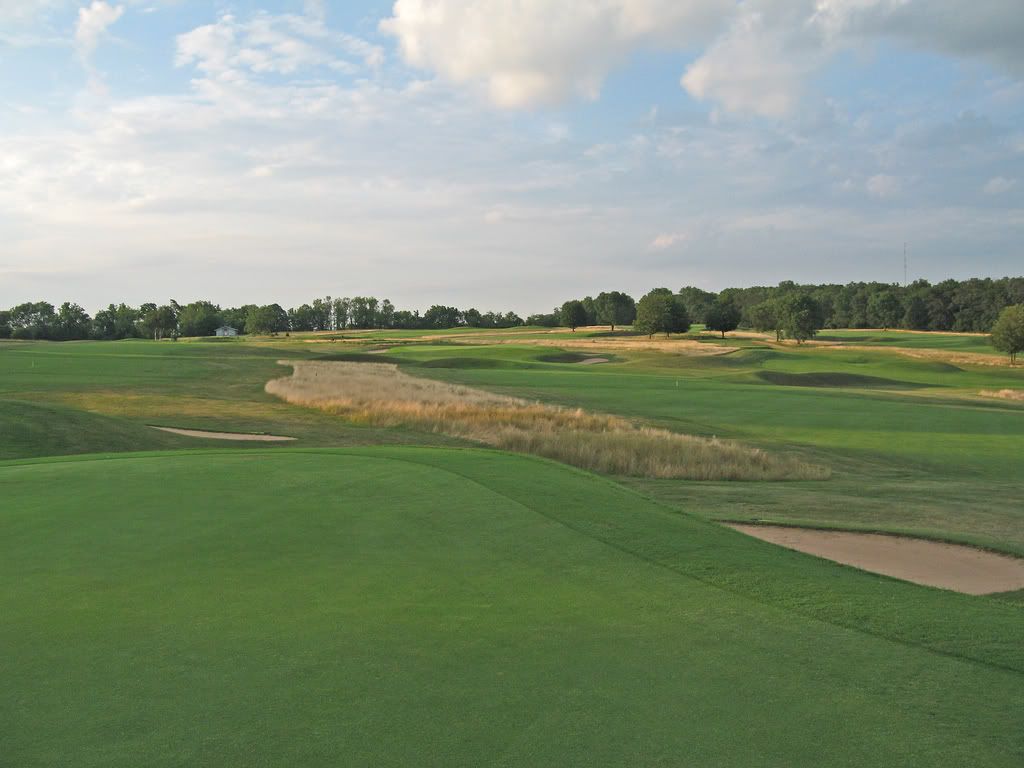
Lawsonia’s Backnine in 1968 before the tree planting program with 12 green in the foreground and the tree on 13 visible in the background
